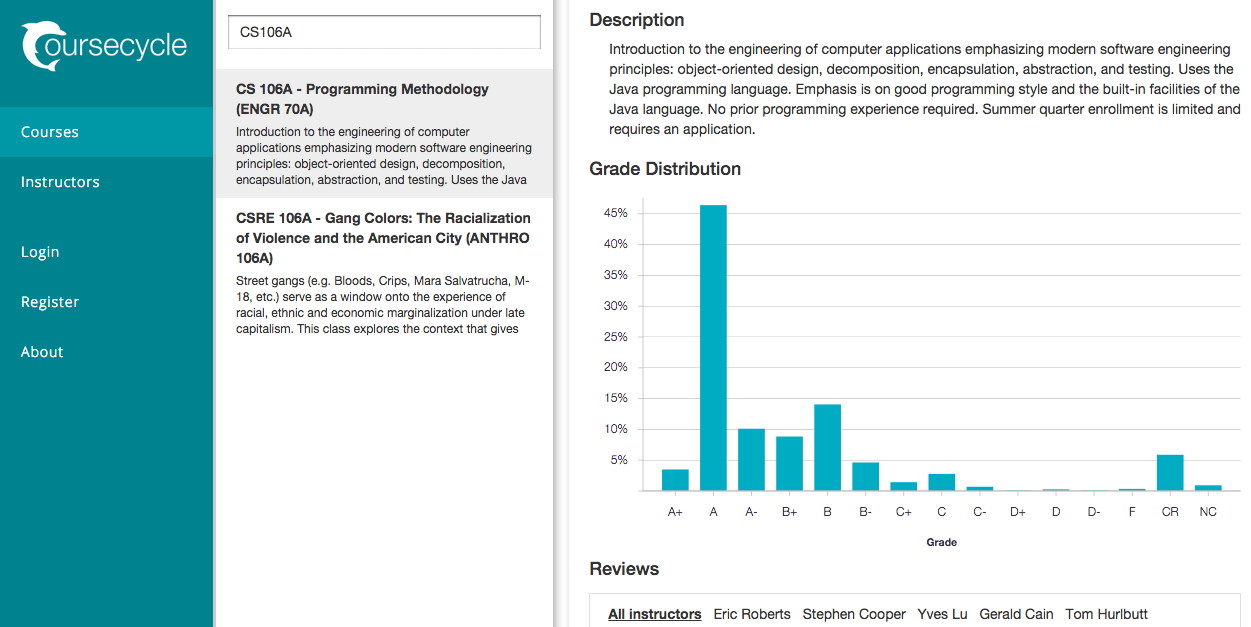When Chegg announced it would shut down CourseRank last November, students scrambled to create alternative websites — including CourseCycle, Edusalsa, Stanfordrank and Treeviews — to help students navigate their academic careers at Stanford.
Although none of the new sites have achieved CourseRank’s prevalence and their developers are still making adjustments, several have seen an increase in use as students entering the new academic year seek assistance in deciding which classes to take.
CourseRank, created by three Stanford students in 2007 and acquired by the textbook rental company Chegg in 2010, allowed users to read and write course reviews, view grade distributions for classes and plan using scheduling tools and major requirement trackers.
CourseRank soon became a campus staple and was used by universities across the U.S. and Canada, but in November 2014, Chegg announced that it would remove the service.
As a result, several groups of students decided to channel Courserank’s data into new Stanford-specific sites dedicated to course planning.
Two such students, Roger Chen ’15 M.S. ’16 and XiaoSong Mu ’15, cofounded CourseCycle after hearing Chegg’s news.
“We knew that a lot of people would want to be able to access the information,” Chen said. “As you can tell, many people had the same thought. There are a bunch of sites like this floating around.”
These sites are not the same, however. Each offers different tools for filtering course information and aiding students’ decision processes.
Stanfordrank sorts reviews by “most helpful” and “most recent”; Treeviews narrows searches by term, subject, number of units and requirement fulfilled; and both CourseCycle and Edusalsa allow students to register for accounts and access a four-year course planner.
“We’re looking beyond reviews,” Chen said. “The planner has been useful to a lot of people and has kept them coming back to CourseCycle.”
Edusalsa added user registration and its planner feature in July, and by the beginning of September, 475 people had signed up for accounts.
Although the sites have drawn the bulk of their data from CourseRank, three of the websites — Coursecycle, Edusalsa and Treeviews — have begun to accumulate new reviews.
Chen said that CourseCycle had about 100 new reviews as of March.
Edusalsa cofounder and first-year doctoral student Pranav Rajpurkar ’15 estimated about 50 additions since new reviews were enabled in July.
“There’s little value to course reviews that were in 2011 versus in 2015,” Rajpurkar said.
In terms of gaining recognition among students, CourseCycle’s and Edusalsa’s creators both noted the importance of word-of-mouth publicity.
During CourseCycle’s early stages, Chen and Mu used Facebook to advertise, but since then they have taken “a very hands-off publicizing approach” and watched the number of users grow, according to Chen. During the registration period scramble, when usage peaks, the website sees roughly 1,000 unique visitors.
Edusalsa has also pursued a number of publicity strategies, from Facebook ads to chalk announcements in White Plaza during the past spring quarter. However, Rajpurkar said that currently word-of-mouth is their best aid.
“Every technological effort has some kind of a tipping point where people start using it by themselves, and it doesn’t need that much marketing anymore,” he said. “I’m surprised that Edusalsa has been able to hit that point recently.”
While Edusalsa incorporated CourseRank’s data, it was not created to imitate CourseRank, said Rajpurkar. He and his roommate Brad Girardeau ’16 created Edusalsa during their sophomore year in part to address the shortcomings of tools like Explore Courses.
They noted that, while Explore Courses informs students of prerequisites, there is no easy way to go in the opposite direction – to learn more about your options after taking a certain class.
Edusalsa’s features demonstrate an original solution to that problem. For example, the CS 107: Computer Systems and Organization course profile indicates that it is useful for a number of more advanced CS classes, as expected, but also for LINGUIST 180: From Languages to Information and LINGUIST 286: Information Retrieval and Web Search. Searches also return recommendations for related courses.
For Rajpurkar, Edusalsa is fundamentally about helping other students identify their passions.
“For some people it’s dance, for other people it’s singing – for me it’s this [site]. It’s one of my most precious things at Stanford,” Rajpurkar said. “I had some friends who graduated and were like, Stanford’s been great, but I haven’t really found a passion. That’s why I think this is important.”
The sites continue to be works in progress. Edusalsa team members are developing a blog called “Dear Freshman Me” focused on personal stories, and Coursecycle is adding the ability to search instructors.
“There’s still stuff under construction because the original site was kind of put together in a rush before CourseRank shut down,” Chen said.
Contact Hannah Knowles at hknowles ‘at’ stanford.edu.
